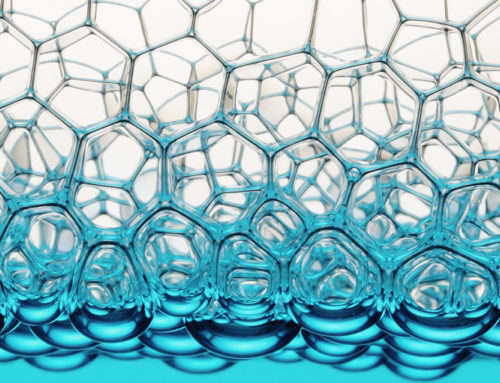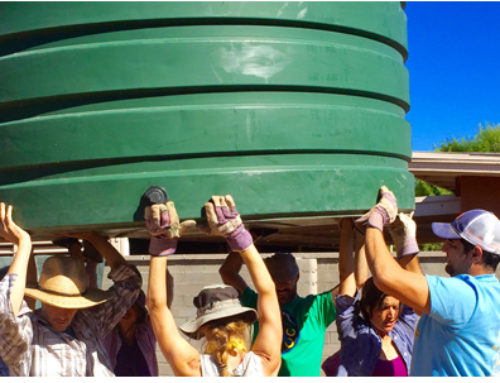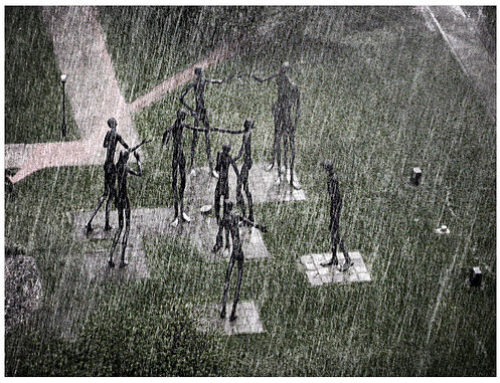-
Recycled water is an important water source in CA. It only makes sense to reduce the amount of water cleaned and then released into rivers and the ocean. Landscaping and industrial processes, which otherwise utilize precious potable water, are sensible places to start using recycled water. Once we’re in the habit, we can expand out to other safe uses. Go San Francisco! They’re even hoping to use recycled water to flush toilets at the Academy of Sciences!
It doesn’t sound like a radical idea: Watering Golden Gate Park‘s meadows and bowers with treated wastewater.
But for a city that for 75 years has relied on a pristine water supply from the Sierra Nevada, it is.
Today, San Francisco‘s water utility will unveil a proposal for the city’s first large-scale water recycling project, an arc-shaped facility near Ocean Beach that would filter and disinfect 2 million gallons of sewer and storm water each day for use on 1,000 acres of San Francisco land.
The $152 million Westside Recycled Water Project would be used to water Golden Gate Park, the Presidio Golf Course and Lincoln Park.
For San Francisco, the system marks a fundamental shift in water policy. Since the 1930s, the San Francisco Public Utilities Commission – which now also serves two dozen Peninsula cities – has been drawing the majority of its water from the Tuolumne River in the Sierra Nevada.
The city’s tap water, most of which is collected in the Hetch Hetchy Reservoir, is considered so pure that federal regulators don’t require it to be filtered. But opponents have condemned the city’s reliance on the far-off watershed ever since San Francisco power brokers succeeded in damming the river and flooding the verdant Hetch Hetchy Valley.
Conservationists have insisted that San Francisco and its partner cities draw on subterranean water stores and install high-tech recycling systems to reduce the 265 million gallons a day diverted from the Tuolumne. In other words, they say, don’t water flowers and flush toilets with pristine mountain water.
“They have a point,” said Steve Ritchie, assistant general manager of the PUC’s water enterprise division. “Recycled water is part of California’s future, and it’s time (San Francisco) got with the program.”
Link to retrofit
The long-running debate over recycled water didn’t gain much traction until several years ago when the city began exploring an extensive plan to retrofit the seismically vulnerable water system. Studies found that 25 million more gallons each day – the equivalent of 1,000 swimming pools – would be needed to slake the thirst of growing populations in San Francisco and Peninsula cities.
Environmental groups, including the Tuolumne River Trust, fought back. Taking more water, they said, would harm already depleted fish populations. Before dams, 100,000 salmon – enough “that a person could walk across the river on their backs” – coursed through the river, said Peter Dreckmeier, program director of the trust. In recent years, salmon have numbered in the hundreds.
To gain support for its $4.6 billion retrofit program, the San Francisco Public Utilities Commission agreed to cap consumption at 265 million gallons per day through 2018. At that point, the PUC and its wholesale customers must re-evaluate the water demands of their cities and businesses.
Dreckmeier doesn’t believe the limit will necessarily restore the health of salmon populations. But at least water diversions won’t increase and the city will take an important step toward reusing water.
“This is the first time in decades that we haven’t moved backward,” Dreckmeier said.
Treating wastewater
As proposed, the Westside project would take treated wastewater from the Oceanside Water Pollution Control Plant near San Francisco Zoo, run it through fine membranes and ultraviolet-light systems, and spread it through the network of existing pipes and sprinklers snaking through the parks. The water could also serve to flush toilets at the California Academy of Sciences.
As in other locations that use recycled water, signs would warn against drinking the water – though Ritchie maintains that the water will be highly treated and probably safe enough to drink.
All told, San Francisco will attempt to save some 10 million gallons a day through both recycling and conservation. Peninsula and East Bay cities, represented by the Bay Area Water Supply and Conservation Agency, are attempting to save about 20 million gallons a day.
The effort, nevertheless, falls well short of what’s needed to reinvigorate the Tuolumne River and correct a historic wrong, said Mike Marshall, executive director of Restore Hetchy Hetchy. He pointed out that Orange County recycles 72 million gallons of water each day, dwarfing San Francisco’s proposal. Orange County’s population, about 3.14 million as of January 2009, is more than 3 1/2 times larger than San Francisco’s, estimated at 856,000 at the end of last year.
“We San Franciscans may be ‘green’ in many ways, but when it comes to responsible water use, we’re stuck in the 19th century,” Marshall said.






